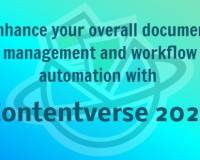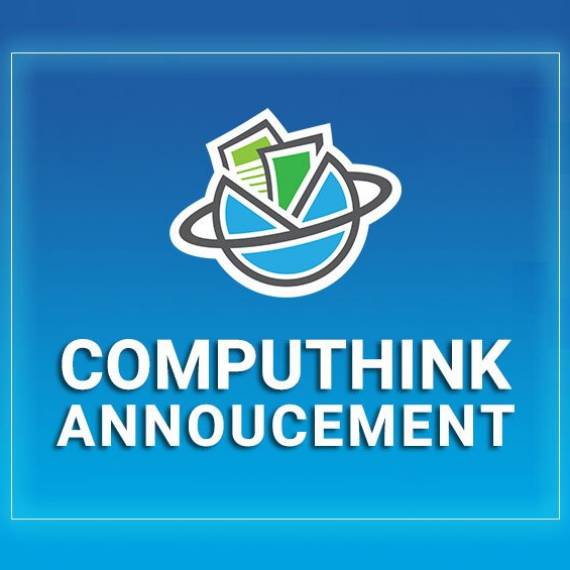In the Fall of 2012, a new Federal directive came out “to develop a 21st-century framework for the management of Government records” which applied pretty much across the board, from the “record keeping” NARA (National Archives and Records Administration) to the Office of Management and Budget, the Office of Personnel Management, and even to the Environmental Protection Agency. The first stated goal of this directive was to “Require Electronic Recordkeeping to Ensure Transparency, Efficiency, and Accountability,” though dozens of agencies with billions of records.
EPA Defines Records
One of the points that sometimes is confusing in electronic document management is what consists of a “document.” Some systems that are pressed into use for document management are really collaboration tools that are not robust enough to handle vast amounts of data. According to the EPA the records that fall under this directive are not just previous paper forms that are to be stored electronically, but:
“Records include all books, papers, maps, photographs, machine readable materials, or other documentary materials, regardless of physical form or characteristics, made or received by an agency of the United States Government under Federal law or in connection with the transaction of public business and preserved or appropriate for preservation by that agency or its legitimate successor as evidence of the organization, functions, policies, decisions, procedures, operations, or other activities of the Government or because of the informational value in them.”
This sounds like pretty much everything. And, one may assume that if this standard becomes established on the governmental level, you’ll be wanting to find a document management solution that will bring as much muscle to preserving and organizing your“records. Also, in a follow-up report about these directives, Forrester research notes that “it calls for investigating secure cloud-based service options to store and manage unclassified electronic records”, which should be a big step forward for the acceptance of moving away from server-based HQ installations and into solutions that allow access on the cloud from wherever your staff is, and whatever platform – desktop, laptop, tablet, or smartphone – they may be using. Obviously, the EPA “has a dog in this fight,” as their environmental custodial role makes reducing the use of paper (whose manufacturing processes are hardly green, and whose waste footprint is extreme) an organizational concern. Remarkably, their take on records management is entirely practical, and applicable to any industry:
“Records management programs must manage organizational information so that it is timely, accurate, complete, cost-effective, accessible and useable. Better information, at the right time, makes better business.”
They have indicated a number of solid business reasons for why a dedicated, flexible document management solution should be implemented, not only on the level of governmental agencies, but in industry, and all the way down to the small office level as well.
Controlling Document Proliferation
First of all, a solution such as Contentverse allows for the control of document proliferation, as a combination of version control and retention/retirement policies make sure that only what is actually needed is in the system, rather than having an ever-growing mass of partial copies across multiple files, and ultimately in off-site storage.
Then there is the sometimes-overlooked factor of the cost of storing paper. Even at the EPA they estimate that they average “25 feet of paper per person” with associated costs of maintaining that paper both in-office and in storage. With electronic document management, those costs are reduced to what’s needed for the tiny fraction of material that actually is required to be maintained in physical form.
Of course, a digital system that doesn’t confirm to your workflow is a system that is not going to be used by your staff, so having a solution that takes your existing information environment into account, and adjusts to fit that, is important. And having a user interface which is familiar is essential in minimizing learning curves for all involved.
The figures out there for how much staff time is expended in the search and handling of paper files is staggering, so having a system with effective search and retrieval functions is important. You want your employees to find the right document with a couple of clicks, rather than a long, frustrating, hunt for a manila folder that might have been misfiled.
Government being government, regulations are a key element among their concerns, and if they’re looking for compliance to whatever set of statutes impact your business, you had better have a system for making sure that you’re operating within those rules, and be able to show you comply. Having a system in place that tracks this for you can save not only a lot of time, but large sums in fines and penalties, or worse. Speaking of worse, having a reliable Document Management solution can also help buffer your business in case of litigation, as your information is always going to be discoverable, and never look like it’s been conveniently lost.
Another sometimes lost purpose for having a solid solution for your data, is corporate memory. In the daily rush to get things done, there’s always a danger that things which today look disposable might be something that a decade later would be highly valued historical information. With the proper organization for archiving, these can be found later, without cluttering up current processes. And, having data stored either on the cloud or in other co-located server facilities, you have a safeguard against fire, flood, storms, and other disasters, meaning your operation can get back on its feet quickly should bad things happen.
Efficiency of Having Paper Around
Lastly, better access to more information, means better decision making and more effective collaboration and team management. With Contentverse you always have the right documents (or portions of documents) in the hands of the right people when they need them. And not having all that paper around makes for a more focused and efficient work environment.
So, if the Federal government is going paperless and shifting its various huge operations into electronic solutions, what’s holding back your organization? The cost savings can be remarkable, and making the switch typically results in substantial, demonstrable, and well-worth-the-effort ROIs. Learn to get ahead with a records management curve.
About the Author:















Leave a Comment